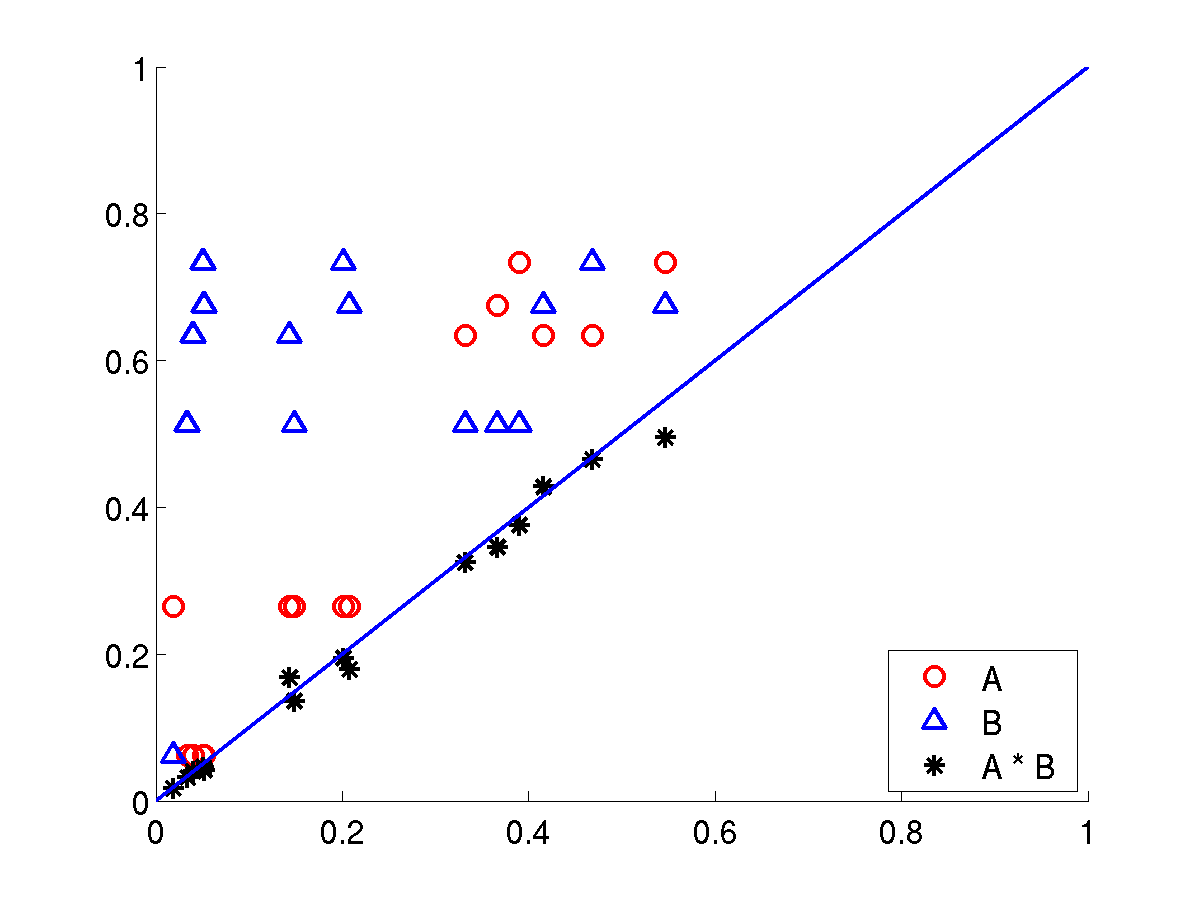
We ran a broadcast experiment involving six simultaneous 802.11a receivers at a bit rate of 48 Mbps. The six receivers are distributed at various locations near the sender. The sender broadcasted 100,000 1500-byte UDP frames, each uniquely numbered, at saturation rate.
We then take each pairwise combination of the six receivers and for each receiver pair, we computed the frame loss rates (FLR) at the individual receivers (R1 and R2), and the simultaneous loss rate at both receivers (i.e., the rate at which both receivers observe a loss for the same UDP frame). In contrast to Table 1, which presented the results for one receiver pair, we plot the results for a total of 6 choose 2 = 15 receiver-pair combinations to test for loss independence.
This scatter plot (click to see full res.) plots the individual FLR (the circles and triangles, on the y-axis) vs. the simultaneous FLR (x-axis) for each pairwise combination of receivers. Note that there are a total of 15 circles and 15 triangles. The plot shows that the individual FLR are greater than the simultaneous FLR, which suggests losses are not totally correlated between the two receivers within each pair.
To test independence, we plot the product of the individual FLRs (star) vs. simultaneous FLR. The plot shows that the product value lie roughly on the y=x line, which suggest that the product of losses are roughly equivalent to the joint loss probability (simultaneous losses). Thus, our results suggests a high degree of loss independence among receivers in our experiments.
Note that the same experiments and analysis are used to generate the results in Table 1 in Section 3.1. In fact, the values of three of the points in the scatter plot appear in Table 1.
Liang, Y., and Chakraborty, S.S. ARQ and packet combining with post-reception selection diversity. In IEEE VTC, vol. 3, pp. 26-29, (September 2004).
Chakraborty, S.S., Liinaharja, M., and Ruttik, K. Diversity and packet combining in Rayleigh fading channels. In IEE Proc. Communications, vol. 152, no. 3, pp. 353-356, (June 2005).